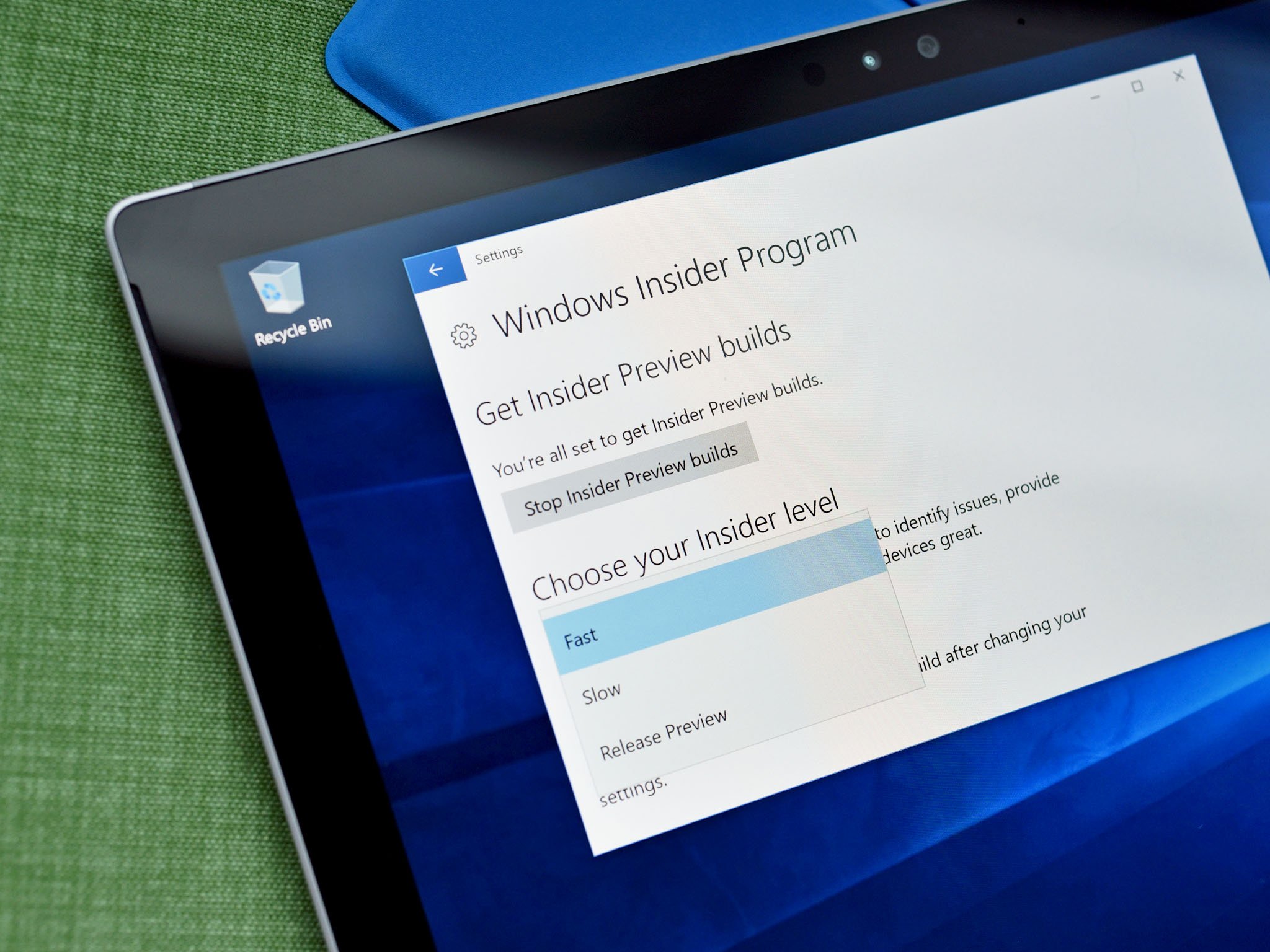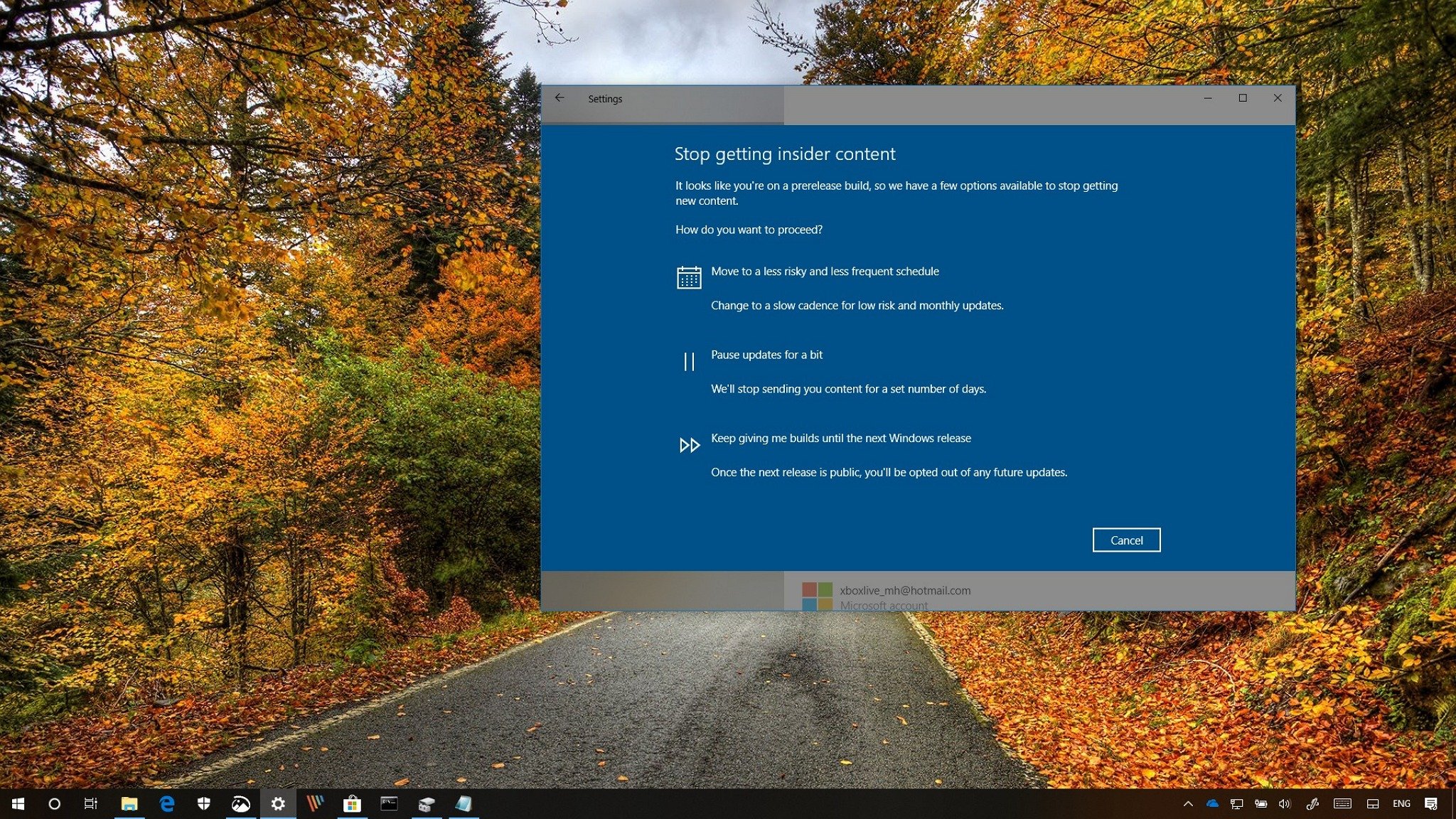Should Microsoft brag about Windows Insider Program success after its October Update mess?
Two Windows Central team members argue different stances on whether Microsoft should brag about the effectiveness of its Insider software-testing program so soon after a major Windows 10 mishap.

In early October, Microsoft announced its next major Windows 10 "feature update," appropriately named the Windows 10 October 2018 Update. It started rolling out the update shortly thereafter to users who actively sought it out (it was not available unless you used a tool to fetch the update). A major issue with the build soon arose, causing users to lose data and leading Microsoft to pull the update.
So what exactly happened? Our Senior Writer Zac Bowden did some digging to find out, and you can read the details here. Short answer: Microsoft mistook the early reports of issues for another bug that had already been squashed. So it continued to roll out the update, oblivious to the fact that a significant file-deletion bug still existed. So you could argue the Windows Insider Program failed, or that Microsoft did in its response to reports of issues. It took weeks for the problem to be resolved, and the "October Update" was not publicly released again until November.
Ever since, some people on the Windows Central team have debated exactly what happened and who's to blame. In particular, Gaming Editor Jez Corden and Contributor and app reviewer Sean Endicott have felt particularly strongly, with opinions that occupy completely different ends of the spectrum. A keynote address from Windows Insider Program Chief Dona Sarkar, at the European SharePoint Office 365 & Azure Conference late last month in Copenhagen, Denmark, brought the debate to a head. (Sarkar happens to be one of our 80 must-follow 2018 Microsoft Influencers.) Sarkar's speech was about how other companies can and should mimic Microsoft's Insider program to ensure successful software releases, and it came on the heels of the October Update mishap.
Endicott argues that it's a very bad look for Sarkar and Microsoft to be touting the Insider Program's success right now, while Corden believes one mistake shouldn't sour the success of the program to date. Below you'll find those two arguments fleshed out a bit. Which side do you stand on? Let us know in the comments.
Time for damage control, not boasting

From Endicott:
My issue isn't with the Windows Insider Program helping Microsoft gain feedback from users, it's how people at Microsoft seem to view it. Slides and presentations from Sarkar about how "insidering" software guarantees the successful rollout of software are both inaccurate and tone deaf to recent issues with Windows 10 and its update process.The presentation that sparked this conversation, by the head of the Windows Insider program, immediately drew attention on Twitter. Sarkar should understand more than anyone that the Windows Insider Program did NOT ensure the smooth rollout of the October 2018 Update. Sure, Microsoft has had success using Insiders for Office and Xbox releases, but that doesn't mean that Insider programs ensure smooth rollouts. Far from it.Windows Insiders spotted bugs that contributed to the delay of the October Update rollout, and those seem to have been ignored. Furthermore, the Release Preview Ring for Insiders was completely skipped over before attempting a large-scale rollout. Why did Microsoft create the Release Preview Ring if it wasn't going to be a last line of defense for spotting issues?There's definitely a role for the Windows Insider program, but the people at Microsoft need to remember what it is, and it isn't a replacement for a QA department. It can help gain meaningful feedback and bug reports from users, but that most certainly doesn't guarantee the smooth rollout of software, particularly software on the scale of Windows 10.(As an aside, I've seen many comments on the web criticizing Dona Sarkar in a sexist and inappropriate way. I think this is both morally wrong and counterproductive to creating meaningful change.)
Corden took a contrary stance ...
One mistake should not define the Insider Program

From Corden:
All the latest news, reviews, and guides for Windows and Xbox diehards.
The spotlight has been on the Windows Insider program since the October 2018 update fiasco, but is it really a "fiasco"?In October, Microsoft revealed that less than one one-hundredth of one percent of users, in very specific conditions, had lost some of their files. Data loss sucks, even if it's affecting just a small subset of users, but the ramifications for Microsoft were fairly broad. Mainstream media covered the issues, which put a target on Microsoft's back, specifically the Windows Insider Program.Microsoft has philosophically been at odds a bit with users over how it handles Windows 10 updates. Those updates are incredibly crucial for the OS to remain secure given the modern-day hacking arms race. The way Microsoft updates Windows might seem inconvenient at times, but it's crucial for the health of the OS, particularly since Redmond seems to have done away with big packaged Windows updates it can sell every few years. It's that sense of inconvenience that leads many of us to ask, What's the point of the Windows Insider Program if it can't prevent these sorts of issues?The reality is it can and it does prevent these sorts of issues. Thousands of them, every year. For a single (but, yes, major) flaw to slip through the cracks, it isn't worthy of some of the outrage I saw spilling all over Twitter, particularly when it was directed at individuals. Even more so when it comes to personal attacks. But that shouldn't even be up for discussion . Does this whole situation warrant all the angry criticism of the Insider Program? Not even slightly.Microsoft is also using Insider Programs for both Xbox One and Office, as well as other software and services it has. The amount of users in those respective programs is far lower than that of Windows, however, and arguably far less complex. Given the bulk that makes up Windows, it's a little remarkable that it works as well as it does.Constructive feedback is always useful, and Microsoft has responded with a wide array of new measures it's going to leverage to prevent the data-loss issue from happening again. But the deluge of entitlement and internet tears over this problem, particularly by those unaffected, has been a little bit silly to digest. Microsoft has plenty of reasons to tout the quality of its Insider Program, across every product where it lands, and the team that works on it should be proud that they, frankly, remain sane despite the deluge of rude, disrespectful whining that makes its way in their direction.The October problem is something that simply doesn't happen often, and I think Microsoft can (and should) be afforded a few mistakes every now and then. To err is human, and human is very much what modern Microsoft is.
Where do you stand?
Do you think it's a big deal that a bug like the one that made Microsoft pull the October Update for weeks after its release slipped through? Should Microsoft still have its employees doing keynote addresses about the Insider Program's success in light of the recent issue? And do you tend to side with Endicott or Corden on the subject? Share your take in the comments.

Sean Endicott is a news writer and apps editor for Windows Central with 11+ years of experience. A Nottingham Trent journalism graduate, Sean has covered the industry’s arc from the Lumia era to the launch of Windows 11 and generative AI. Having started at Thrifter, he uses his expertise in price tracking to help readers find genuine hardware value.
Beyond tech news, Sean is a UK sports media pioneer. In 2017, he became one of the first to stream via smartphone and is an expert in AP Capture systems. A tech-forward coach, he was named 2024 BAFA Youth Coach of the Year. He is focused on using technology—from AI to Clipchamp—to gain a practical edge.
